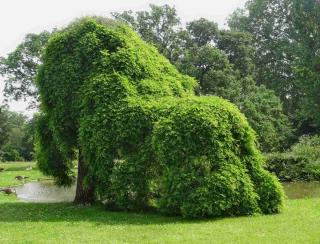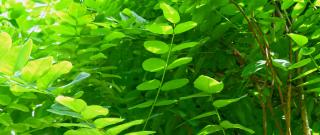

The mop-head acacia tree is an appealing ornamental tree.
From planting and pruning to basic care, follow our advice to grow a thick, round mophead acacia.
Mop-top tree key facts
Name – Robinia pseudoacacia ‘Umbraculifera’
Family – Fabaceae
Height – rarely over 20 feet (6 m)
Exposure – Full sun
Care – Little care required
Leafage – deciduous
Soil type – ordinary
Special appeal – Standalone tree in a garden
Read also:
It is best planted in fall to promote root development.
It’s preferable to select a location that gets lots of sun exposure. Avoid planting too close to a house, or even near any other tree: it’s most striking when grown as a standalone tree.
If you purchased your tree with bare roots or from a container that’s a bit small for the tree’s height, it may be a good idea to stake the tree.
The root system of this Acacia species is very vigorous. It will send up offshoots and new trees will start growing up to a dozen feet (3 meters) away from the original tree.
Setting up a rhizome barrier will help slow the spread.
It doesn’t need any pruning.
If ever you wish to bring the branches back somewhat, prune and trim during the tree’s dormant season.
Endeavor to keep the nice round shape as you prune.
Good to know: spikes appear on younger branches, so best have thick gloves on when handling the plant.
As for root suckers, simply cut them down to the ground twice a year to keep them from growing too large.
Mophead acacia is an excellent container pot choice. It will do fine as long as it is kept sufficiently watered in well-draining soil.
Mophead acacia is recommended as a standalone. This highlights its particularly dense and lush green foliage.
The “mop-like” silhouette occurs naturally. It gets so thick that it becomes almost impossible to see through the tree!
The reasonably small size, about 20 to 25 feet (6 to 8 m), makes it a great choice for planting in small-sized gardens. It’s also very appealing when grown alongside roads. Municipalities find that it is an easy tree to care for with easy-to-control growing.

Other notable ones are:

Your comment is awaiting moderation.
Do mop top trees have smaller root balls, I need to know due to being a tenant.
Hi Beverly, this particular acacia has an important trait you should know: it tends to grow from root suckers. This means a new tree may pop up from the ground some way off. Though the tree won’t often grow much taller than 30 feet/10 meters, it might send out new growth in new places in the garden. Usually, this isn’t much of a problem: just cut the new growth once or twice a year and that’s that. But it might spread to the neighbor’s.
You can try growing it in a large pot, though, it will do great in that.
A tree that is a bit shorter and won’t spread too far and fast is the pink dwarf willow. It’s also got a silhouette like that of the mophead acacia, but your landlord surely won’t object in any way because it’s very easy to control.